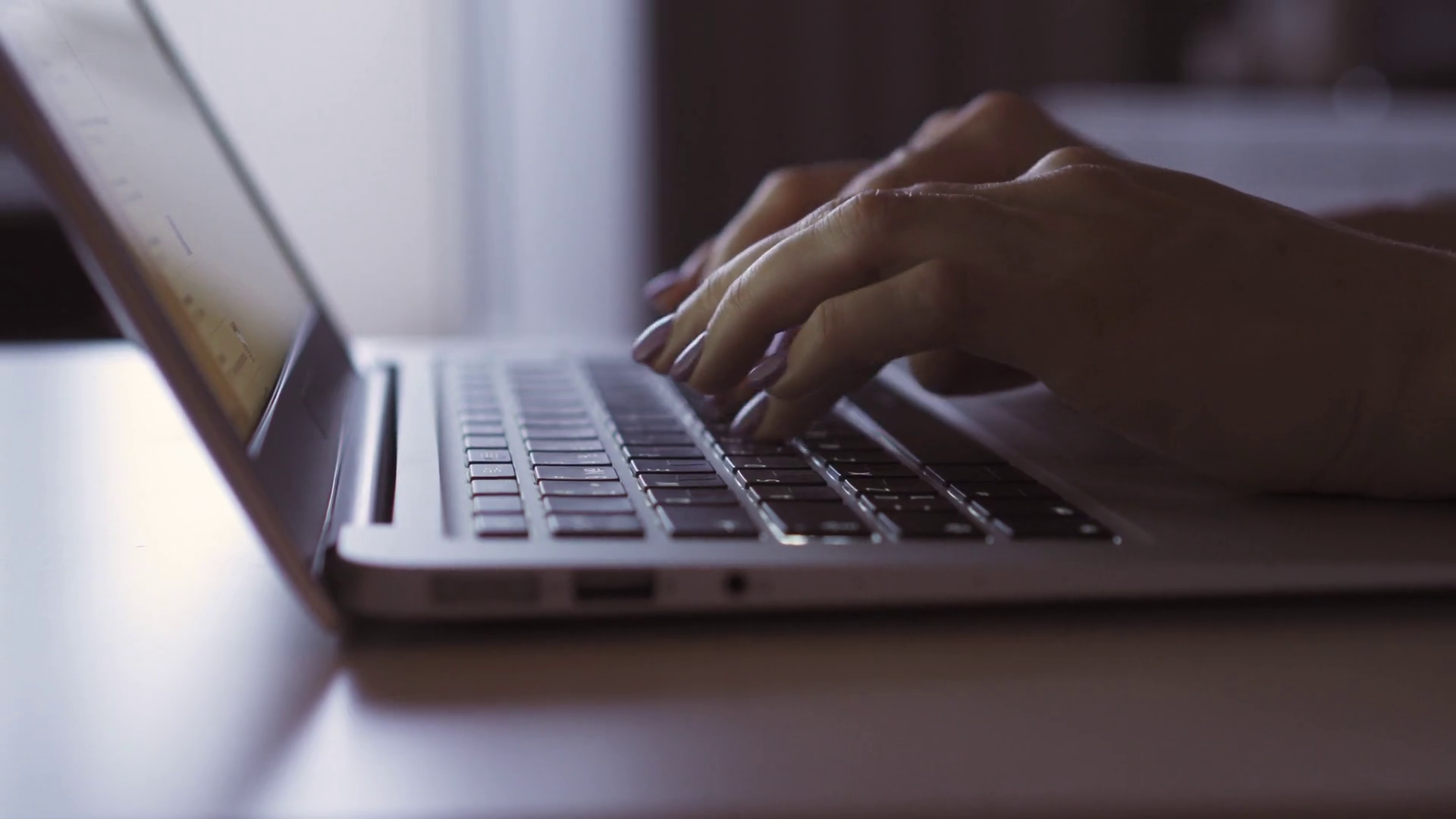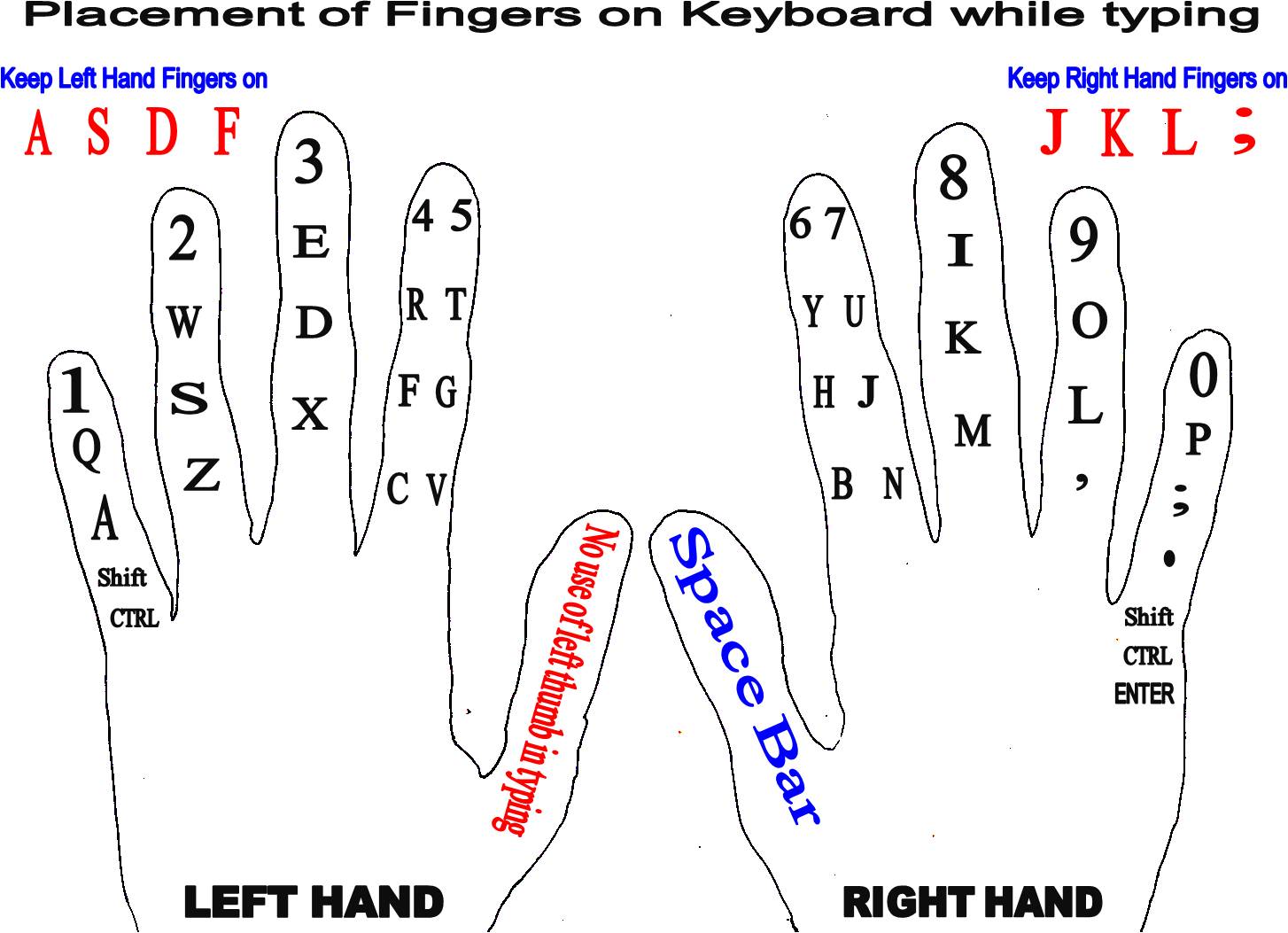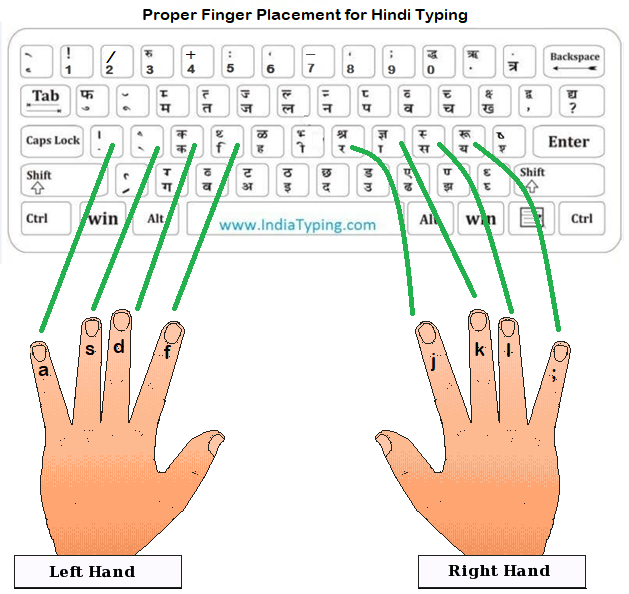
Your left middle finger rests on the letter D and hits the characters: D, R, 5, and X.Your left index finger rests on the letter F and hits the characters: F, C, V, G, T, and 6.X Research source The home row keys along with the fingers that you should hit each letter with are as follows: X Research source In brief, your hands should arch up slightly from the wrists, and your fingers should rest lightly on the "home row" of the keyboard. Angle your left hand to the right at a 45-degree angle. Angle your right hand to the left at a 145-degree angle. Let each finger return to its start position after each keystroke. Hold your hands and fingers in the position shown.
#Computer typing finger position how to
Only speed up when your fingers hit the right keys out of habit and it will progress with practice.Learn how to hold your hands.

Just slide your fingers around until they find the elevated ‘tabs’ on the F and J keys and re-position your fingers into the home row position. Do not give in and look at the keys if you get stuck.To train yourself to touch type, you should always use the right fingers for the right keys, and return them to the home position when you have finished. As you can see, your index, middle and ring fingers move either up or down from their home position, your thumb covers the space bar, and your pinky fingers cover the rest (both the green and dark blue keys). Your fingers are now in the home row position.Įach of your fingers has a specific area of the keyboard to cover, as shown in the image below.Then place the fingers on your left hand on the A, S, D and F keys and the fingers on your right hand on the J, K, L and keys.Place your left index finger on the F key, and your right index finger on the J key. Locate the elevated “tabs”, without looking down, on the F and J keys.When touch typing, returning your fingers to what is referred to as the ‘ home row position’ will assist you to type without looking at the keyboard. Positioning your fingers over the home row allows you to more easily reach the other keys on the keyboard. The home row is a section of the keyboard that is central to all the other keys (see image below). Never shift your body weight to your wrists by resting on them.


This resource will explain touch typing, and detail how to begin training yourself to touch type.


 0 kommentar(er)
0 kommentar(er)
